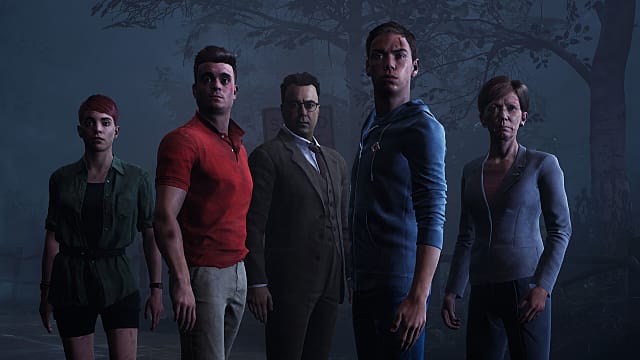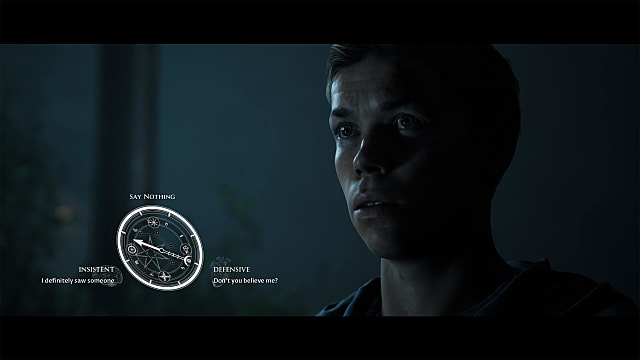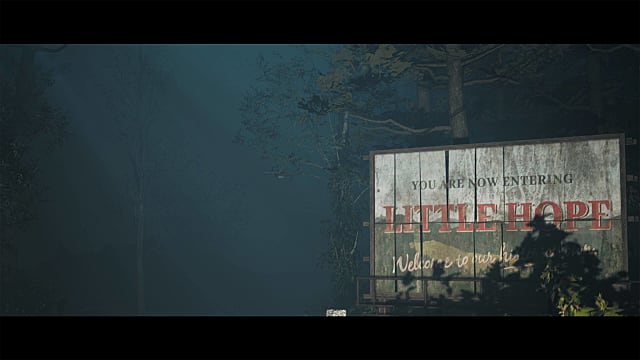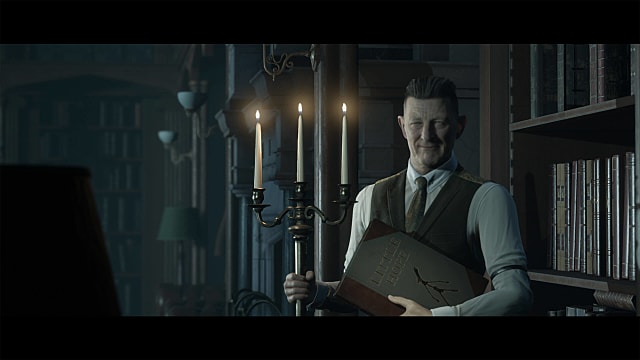

Little Hope continues The Dark Pictures Anthology as the second game in the series after Man of Medan in 2019. I found myself disappointed with Man of Medan but Little Hope brings further promise
As a fan of developer Supermassive's Until Dawn, the improvements seen in Little Hope over its predecessor give me hope in the next interactive drama title in The Dark Pictures Anthology.
Little Hope Review — Begin the Witch Hunts
The premise of Little Hope follows five characters as they explore the ghost town of the same name. After the group gets into a bus accident, they must navigate the history of Little Hope’s 1692 witch hunt. They experience flashbacks related to Little Hope’s witch trials and must find the cause of the supernatural forces plaguing the area.
In Man of Medan, a large part of the beginning of the story felt incredibly slow as it used up around five chapters to establish its settings and characters before getting into the actual plot. Unfortunately none of the characters were particularly likable.
The cast in Little Hope is much easier to like, but there is a distinct lack of chemistry between them.
Little Hope’s narrative, on the other hand, is a noticeable improvement from Man of Medan’s. The story wastes no time going straight into the scary bits, and each of the characters in the cast actually has a personal connection with the events that happened during the witch trials, even if it’s only at face value. A group of settlers witnessed during the 1692 flashbacks looks exactly like the characters in the present-day main cast.
The narrative’s pacing has also improved. Until Dawn had a sort of rhythmic flow to it, despite starting off a bit slow.
Whenever the group ends up splitting from each other and experiences different events at separate locations, the circumstances leading up to them feel much more natural. Each character faces their own demons. Little Hope’s threats are established early in the story, the aspect of which made Until Dawn such a gripping tale and the lack thereof in Man of Medan’s middling plot.
Another aspect that Little Hope successfully employs is that it doesn’t spoil its twist halfway through the game like Man of Medan does. That alone keeps you looking forward to continuing the story as you’re wondering to yourself, “There has to be an explanation to all this!” It takes a little while to get there, but it does turn out there is an explanation. Though some players may not be totally thrilled with it.
Different Game, Same Gameplay
The gameplay in Little Hope is nearly identical to Man of Medan’s. If you’ve played that entry, you know exactly what to expect here. Players control a character in the third person while walking around interacting with collectibles and objects to advance the story, as well as making dialogue choices that can impact your relationships with the characters.
The “gameplay” part of this game is the inclusion of quick-time events (QTEs). During tense moments in the story, passing or failing these QTEs can mean the difference between life and death for a character.
Picking up collectibles will provide you with additional context of the game’s lore as well as some giving you premonitions of future decisions. I enjoyed Little Hope’s premise and background, much more than Man of Medan’s, so learning more about what transpired in the past was fun to do.
If quick time events aren’t up your alley, Little Hope has plenty of accessibility options to improve the experience. They’re the same ones in Man of Medan, such as the ability to freeze QTEs so you don’t have to worry about missing them. You can also add color-coded subtitles and change the size of them if needed.
Some Quality of Life
Despite the variety of accessibility options, what’s strange to me is that none of Supermassive’s games in this interactive drama format include many quality of life (QOL) options. You can’t skip scenes you’ve already seen, so if you’re going for subsequent playthroughs to hunt for achievements or experience new scenes, then you’re going to have to watch through everything again.
This interactive drama type of game is like a western version of Japan’s visual novel genre. Modern Japanese visual novels have a bevy of QOL features because, like The Dark Pictures Anthology, they also require multiple playthroughs to unlock certain paths and events.
Most of the time, you can fast forward text you’ve already seen, and sometimes the game will actually stop if it comes across a line you haven’t. It really baffles me why Little Hope doesn’t have QOL options like these; it’s virtually unchanged from Man of Medan and Until Dawn.
The Life is Strange series has a skip cutscene feature, so why can’t these games have it as well?
Multiplayer Scares
If you’re playing solo, there are also certain story segments where a character will experience a particular event, but you’ll be controlling someone else entirely and will miss out on that character’s point of view. That’s where the game’s multiplayer function comes into play.
You can play the co-op Shared Story mode, where Player One will experience one set of events while Player Two experiences a different point of view. Shared Story is actually a great feature for replayability, but can sometimes be awkward for those playing in single player.
However, solo players will be able to experience that other point of view while playing the Curator’s Cut after beating the game once, rather than the standard Theatrical Cut. The Curator’s Cut is typically locked behind as a pre-order bonus, but will most likely be available as free DLC later on like Man of Medan’s was.
The other multiplayer mode is Movie Night, a fun couch co-op experience where the game asks you to pass the controller to your buddies between story segments.
As for the game’s visuals, the characters look as realistic and great as ever. Most people will recognize Will Poulter’s character, Andrew, as he uses Poulter’s likeness. The environments look fantastic and the graphics are just beautiful.
However, sometimes controlling characters feel stiff when moving around the different areas of the game, something that still persists in these interactive drama games. The script also feels a bit stilted at times, sounding unnatural.
The voice acting is generally up to par, but you can tell where multiple paths are supposed to branch out due to some awkward silence between different characters' spoken dialogue. Additionally, Little Hope crams a few too many jump scares over its length for my liking.
Little Hope Review — The Bottom Like
Pros
- Interesting premise and narrative
- Good accessibility options
- Great looking game
Cons
- Lacks quality of life features
- Jump scares are utilized too much
- Script and dialogue are a bit awkward at times
Little Hope certainly renewed my faith in The Dark Pictures Anthology. If Supermassive can continue with telling these kinds of stories with engaging characters, then I believe future entries will be just as exciting.
Going forward, I believe these games could really benefit from more quality of life features such as scene skipping. It would definitely help enhance the overall experience.




0 comments:
Post a Comment